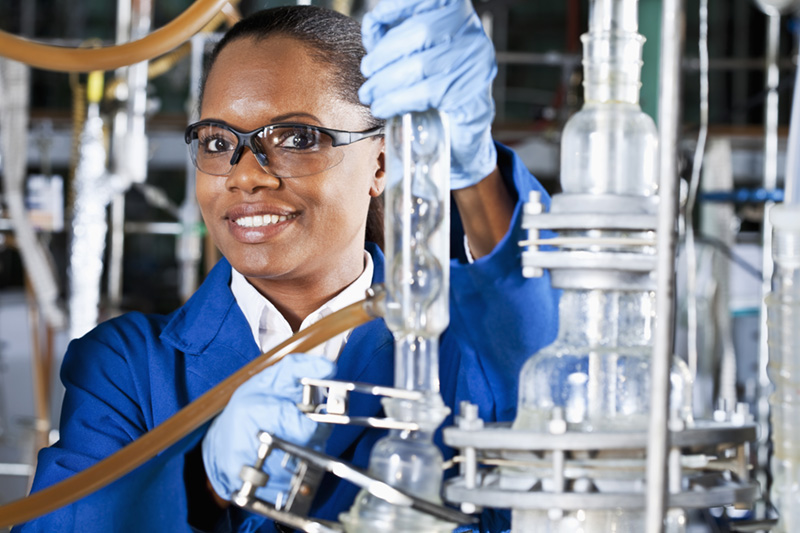

Power to ammonia investigates storage of renewable energy in liquid ammonia
19-12-2016
 In the coming years, the supply of electricity from solar cells and wind turbines will increase significantly. In the summer, once in a while there will be a large supply of solar and wind energy and in the winter at times a much smaller supply. Therefore large-scale storage of renewable electricity is needed. At the beginning of 2016 a Dutch consortium of companies, universities and research organisations started to look into the potential of renewable energy storage in the form of liquid ammonia. What options are available?
In the coming years, the supply of electricity from solar cells and wind turbines will increase significantly. In the summer, once in a while there will be a large supply of solar and wind energy and in the winter at times a much smaller supply. Therefore large-scale storage of renewable electricity is needed. At the beginning of 2016 a Dutch consortium of companies, universities and research organisations started to look into the potential of renewable energy storage in the form of liquid ammonia. What options are available?
Power to Ammonia is the name of the project where Stedin Infra Services, Nuon, VoltaChem co-initiator ECN, Delft University, Twente University, Proton Ventures, OCI Nitrogen, Akzo Nobel, CE Delft and ISPT are involved. The idea behind Power to Ammonia is to convert sustainable electricity into ammonia and store the liquid at minus 33°C and atmospheric pressure. At any time needed, the ammonia can serve as a fuel for gas turbines in power plants. A refrigerated tank with approximately 60,000 tons of liquid ammonia contains approximately 375 GWh energy (HHV), which is equivalent to the annual production of thirty large wind turbines of 5 MW on land. Thus, it is no problem in summer, when the sun is high in the sky, to produce a winter supply of ammonia, which can be used by energy companies during wintertime. The advantage is that ammonia can be burned in a clean way to nitrogen and water. If there is still release of nitrogen oxides during combustion then they can be reduced with a catalyst and ammonia to nitrogen and water, like it already happens in a power plant. In short, ammonia burns clean and there are no more CO2 emissions from the chimney. Another advantage is that the industry has many years of experience with the production, storage and loading of millions of tons of ammonia according to stringent rules. Although ammonia is a toxic substance, it occurs only in small quantities in our body and is not carcinogenic. At low harmless concentrations of a few ppm you smell the gas immediately, giving the opportunity to repair small leaks quickly.
Two business cases are being explored, explains Innovation Manager Yvonne van Delft.
- "For the first Stedin is involved. At Goeree Overflakkee in the province of Zeeland they want to convert local sustainable energy into ammonia. That can be electricity originating from wind turbines on sea, tidal power or solar fields. A choice has not been made yet. The idea is, at times of an oversupply of electricity, to produce ammonia with a plant of Proton Ventures. Subsequently, the produced ammonia will be moved to Rotterdam by truck or ship, where companies can store, consume or sell ammonia. The advantage is that Stedin does not need to install expensive high-voltage cables to transport electricity (which is sometimes not used) from the island to another place."
- "The second business case concerns Nuon, that wants to convert renewable electricity in the summer to ammonia and use it in the winter as a carbon-free fuel for its Magnum power plant in Eemshaven."
VoltaChem co-inititator ECN looks at different technologies to convert electricity into ammonia; either existing technology, such as the technology of Proton Ventures, as well as future technologies, like the ones Professor Fokko Mulder develops with his team at TU Delft. "For each technology we calculate the conversion and efficiency of the process and what the investment and operational costs will be. Then we compare the different routes and calculate the business case. By the end of this year we make a choice and we will continue with the most promising technology. A roadmap will be made in which we indicate the critical issues that need to be solved. "With the interim results, Nuon and Stedin can start calculating the business case", says Van Delft. "This project fits perfectly with the VoltaChem program: in the program line Power2Hydrogen technologies are developed for the production of hydrogen, and subsequent reactions such as ammonia synthesis. This program line also includes research for more efficient electrolytic PEM (proton exchange membrane) electrolyzers in the framework of the recently launched ELECTRE project with VoltaChem co-initiator ECN as coordinator.
This is a summary of the article by the Dutch NPT Procestechnologie magazine. Download the article (in Dutch).
Read more about the Power-2-Ammonia project.
Source: NPT Procestechnologie
Share this page: